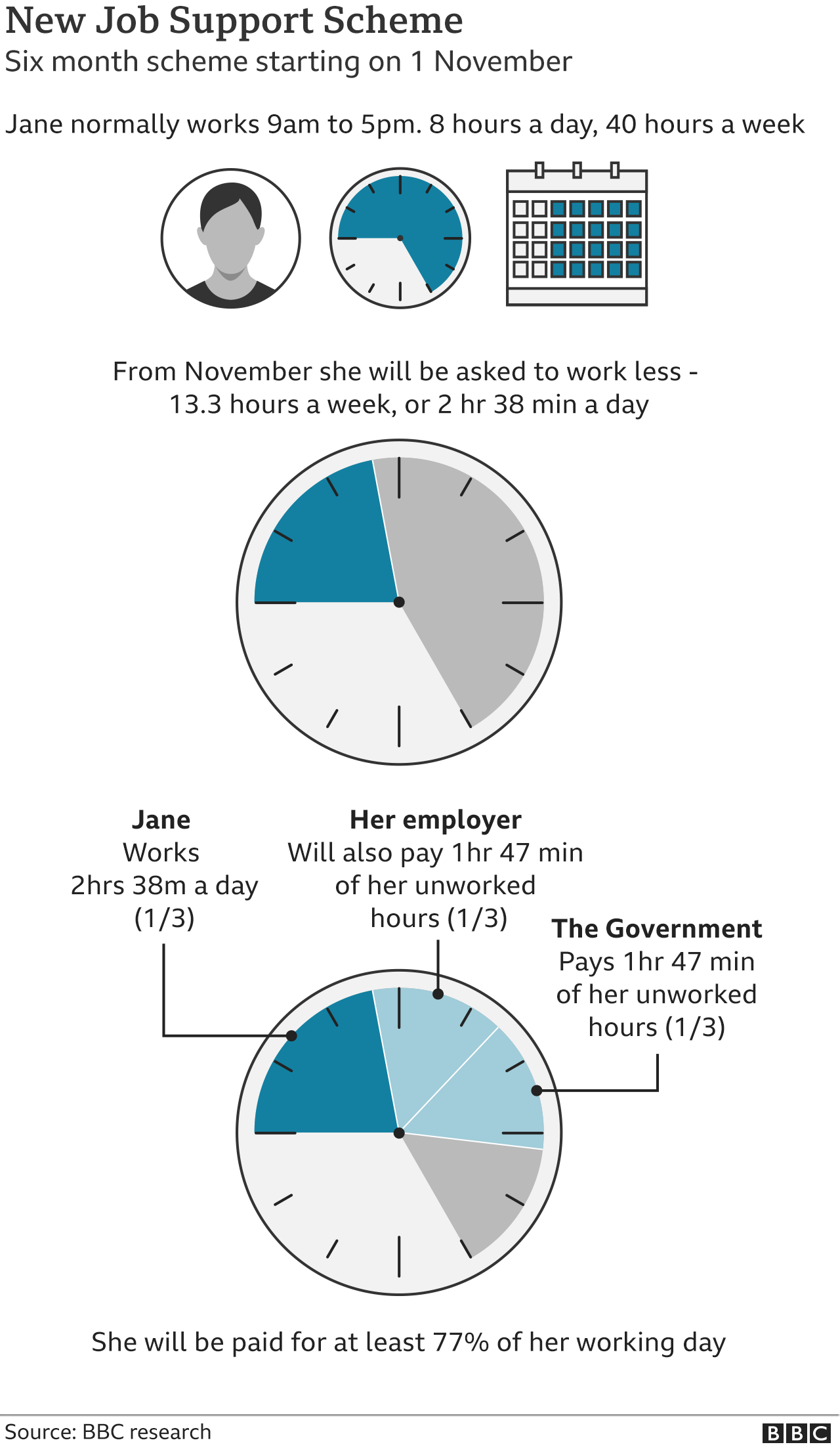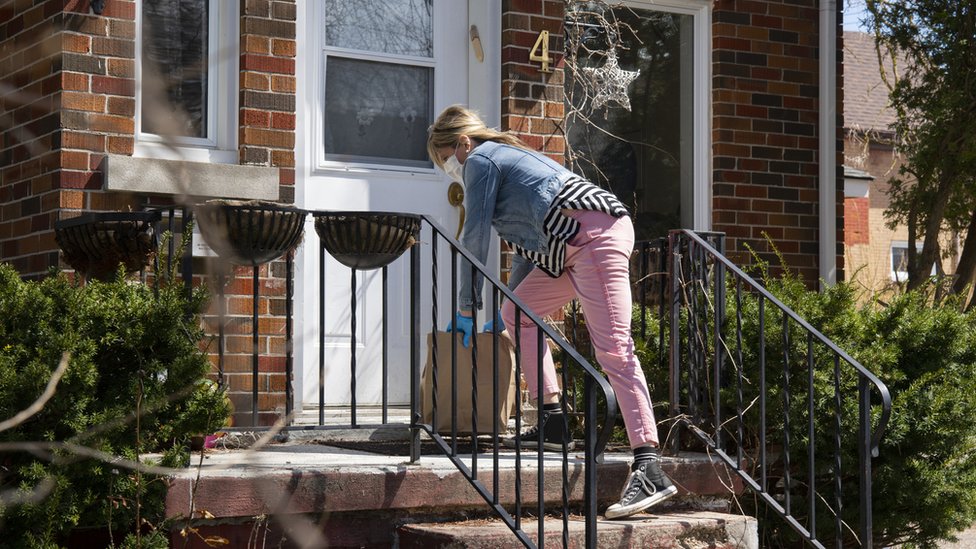By Eleanor Lawrie
BBC News
Chancellor Rishi Sunak has revealed details of his Job Support Scheme that will replace furlough when it closes on 31 October.
What is the Job Support Scheme?
The Job Support Scheme will run for six months from 1 November.
It will top up salaries in firms which can’t take employees back full-time.
To be eligible, employees must work for at least one-third of their normal hours.
For the hours not worked, the government and employer will each pay one-third of the remaining wages. This means the employee would get at least 77% of their pay.

The payment will be based on an employee’s normal salary, with the government contribution capped at £697.92 per month.
So, for example, if someone earning £2,000 a month was working half their hours, they’d get £1,000 normal pay. They would then get £333 extra from their employer and £333 from the government.
This is almost the same as the 80% offered under furlough scheme – but employees have to work at least a third of their hours, instead of none. After three months, the government may increase the minimum number of hours worked.
Employees must be in ”viable jobs” to benefit from the scheme. Those in industries currently closed – such as nightclubs – may lose out as there isn’t any work.
What does the scheme mean for firms?
At the height of the furlough scheme, the government paid 80% of workers’ wages. But under the new scheme it will pay a maximum of 22%.
The Job Support Scheme is open to small and medium-sized businesses (usually defined as firms with 250 employees or less).

Large businesses are also eligible, if they can prove their revenue has fallen because of coronavirus.
Employees must have been on the firm’s payroll since at least 23 September. They can be moved on and off the scheme, or work different hours. Each working arrangement must cover at least seven days.
Workers cannot be made redundant or put on notice while a Jobs Support Scheme grant is being claimed on their behalf.
As with the furlough scheme, employers will be reimbursed by the government after the work has been done.
What other jobs help is on offer?
To minimise unemployment, the UK government will also give firms:
- £1,000 for every furloughed employee kept on until at least the end of January
- £1,500 for every out-of-work 16-24 year-old given a ”high quality” six-month work placement
- £2,000 for every under-25 apprentice taken on until the end of January, or £1,500 for over-25s
Can I be made redundant while on furlough?
Yes. Employees can be made redundant at any point during the scheme, which continues until 31 October.
If a worker loses their job and is entitled to redundancy pay, this should be calculated based on their pre-furlough wages, and firms can’t use the money from furlough to subsidise redundancy packages.

What is furlough and why was it introduced?
The furlough scheme was designed to help people who couldn’t do their jobs and prevent mass redundancies.
Since July, furloughed employees have been able to go back to work part-time. with the furlough scheme covering the other days not worked.
Employers now have to pay 10% of the wages of furloughed workers, plus their National Insurance and pension contributions, rising to 20% in October.
Can I work if I’ve been furloughed?
When the scheme began, furloughed staff weren’t able to do any work for their employer. However, they can now be brought back to work on a part-time basis.
Those still on furlough can volunteer in the community, or even for their company, as long as they aren’t making them money or providing a service.

If you work for more than one firm, you can receive furlough from any of them, up to £2,500 a month per employer.
You can continue working for any that still need you or start working for a new employer, provided you are not breaching any existing contracts.
How popular has the scheme been?
The take-up has been significant, with 9.6 million workers furloughed by 1.2 million employers since March.
The scheme covers full-time, part-time, flexible, zero-hour and agency workers if they were on their employer’s PAYE payroll on 19 March 2020.
Workers must be furloughed for at least three weeks, and can be furloughed more than once.

Will I still get sick pay and a bonus?
Anyone on furlough retains the same employment rights. If you are ill you are eligible for statutory sick pay or can be placed on furlough.
If you are on unpaid leave, shielding or have caring responsibilities, you are also eligible. Staff on parental leave will still receive statutory pay from the government.
Although employers now have to pay towards the scheme, they do not also have to top up salaries that no longer reach the minimum wage.



